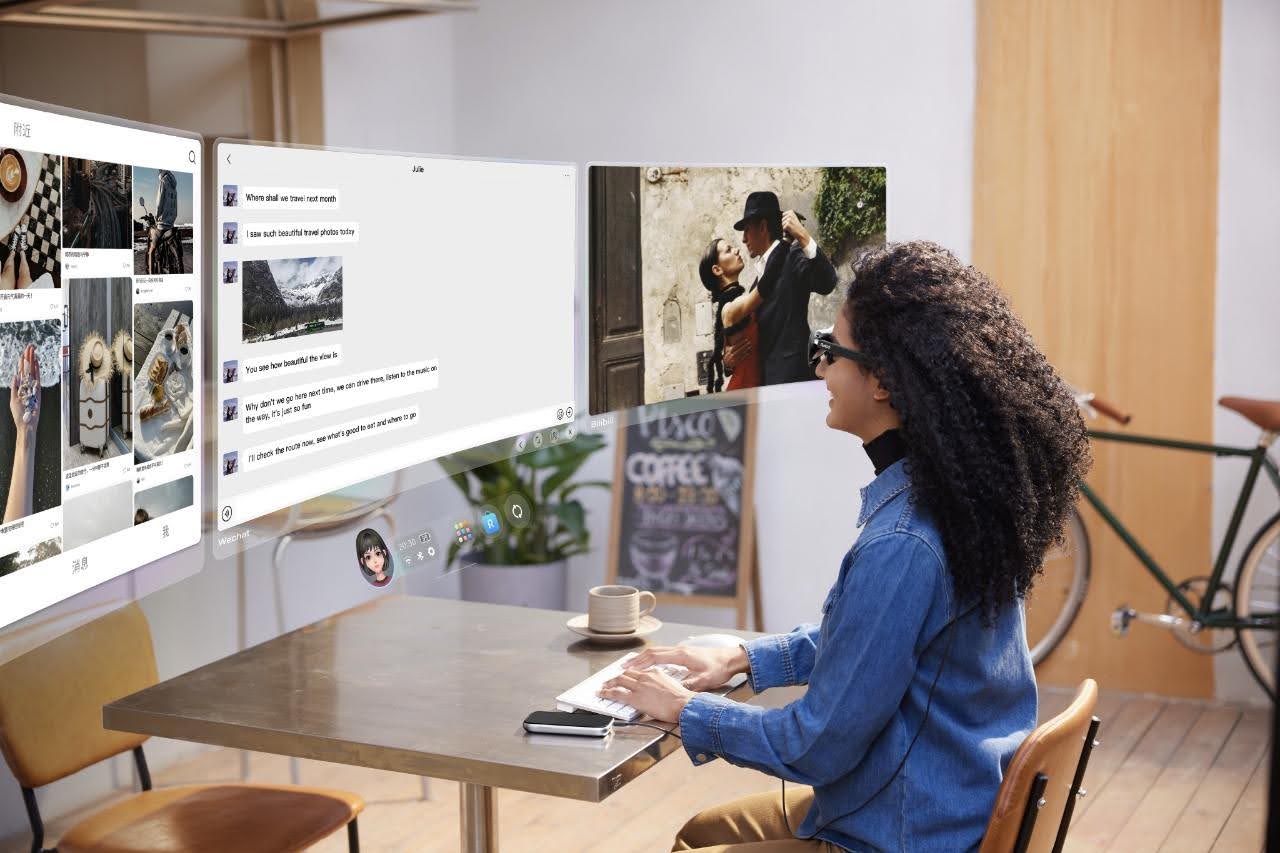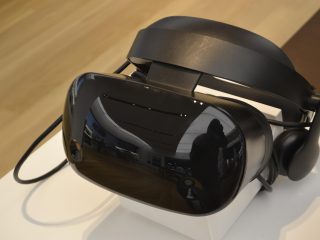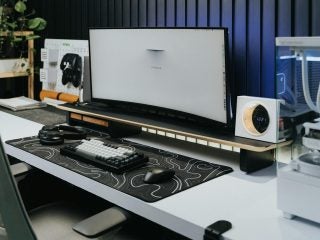We’re expected to do more with less: less space, less time, and often less clarity.
Rokid offers a refreshing counterpoint. It doesn’t ask you to shrink your workflow to fit your screen; it expands your screen to suit your workflow.
The AR wearables market has long promised to revolutionize how we work. However, for many professionals, “spatial computing” feels way more out of reach than a viable productivity tool. Rokid’s latest offering may just change that perception.
Weighing only 75 grams, the Rokid AR Spatial looks like a pair of high-end sunglasses, not a futuristic headset. But behind the minimalist exterior lies a fully realized spatial interface: a virtual 300-inch display, support for multi-screen interaction, and Bluetooth pairing with keyboards and mice. Whether editing a document mid-flight, reviewing a CAD model on-site, or presenting an idea in a coffee shop, Rokid AR Spatial turns any environment into a functional workspace, without lugging around a laptop or hunching over a tiny tablet.
The pitch here isn’t about spectacle. It’s about utility. AR Spatial isn’t a gimmick layered onto your day but an adaptable interface that disappears when you don’t need it and expands when you do. Crucially, it plays well with your existing tech stack. It works across devices and operating systems, turning phones and tablets into powerful spatial engines.
Rokid’s proprietary YodaOS Master enables snappy, stable rendering with low latency, making the device feel like an extension of your thought process. You can open an app or summon a second window without breaking focus.
The magic of these spatial computing devices isn’t in the display size but in how it frees your mind to think spatially. Imagine having your writing on one side, your research on the other, and a video call hovering just out of center view, or laying out a marketing pitch with charts, mockups, and slide notes open simultaneously.
This kind of visual freedom could mean faster ideation, fewer errors, and better collaboration for architecture, engineering, design, or remote sales professionals.
Rokid isn’t the only company in the AR space, but its bet on practicality over spectacle may be the smart move. AR Spatial doesn’t require you to change your workflow; it gives your workflow more room to breathe. And in an increasingly cluttered digital world, that might be.

















